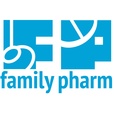
Summary: We explore pieces of important evidence that offer a contrasting view on lipid control from the national guidelines. We are also introducing a new EBM resource available to CMA members: InfoPOEMs, which highlights clinical studies that the editorial team finds relevant. http://www.cma.ca/clinicalresources/infopoems Treatment group Tools for Practice 2013: “Is Diabetes a Coronary Heart Disease Equivalent?” http://www.acfp.ca/Portals/0/docs/TFP/20131021_093004.pdf “Though diabetes does confer an increased risk of CV events, it is not automatically equivalent to having experienced a myocardial infarction (MI) (and thus does not always warrant aggressive pharmacotherapy). CV risk should be predicted, and therapy guided, by taking into account individual risk factors.” InfoPOEM: “Limited data to guide lipid lowering in octogenarians” http://www.ncbi.nlm.nih.gov/pubmed/20952373 either extremes of cholesterol levels (low or high) are associated with increased mortality in patients >80 years old Non statin lipid medications Tools for Practice 2010: “Ezetimibe: Lowers LDL cholesterol but what else?” http://www.acfp.ca/Portals/0/docs/TFP/20111028_105411.pdf “Eight years after being licensed by the FDA, there is still no evidence that ezetimibe reduces cardiovascular outcomes. It may be worse than niacin and there is concern about a potential increased cancer mortality risk.” Tools for Practice 2012: “Niacin added to statins for cardiovascular disease? 1 + 1 = 1” http://www.acfp.ca/Portals/0/docs/TFP/20120502_095745.pdf “In patients with cardiovascular disease already on statin therapy, adding niacin does not improve cardiovascular events. Among lipid treatments, only statin monotherapy has strong evidence for CVD prevention (regardless of lipid levels).” Tools for Practice 2013: “Fibrates: Statin’s Trusty Sidekick or Lackluster Fallback?” http://www.acfp.ca/Portals/0/docs/TFP/20131007_090323.pdf “When used alone, fibrates reduce non-fatal coronary events, but have no effect on mortality or other CV events, including stroke. Current evidence suggests fibrates provide no advantage when added to statin therapy.” InfoPOEM: “Statins but not fibrates associated with lower risk of pancreatitis” http://www.ncbi.nlm.nih.gov/pubmed/22910758 statins significantly reduced risk of pancreatitis, where as fibrates did not Statin dosing and efficacy Cochrane 2014: “Statins for the primary prevention of cardiovascular disease” http://summaries.cochrane.org/CD004816/statins-for-the-primary-prevention-of-cardiovascular-disease "All-cause mortality was reduced by statins (OR 0.86, 95% CI 0.79 to 0.94); as was combined fatal and non-fatal CVD RR 0.75 (95% CI 0.70 to 0.81), combined fatal and non-fatal CHD events RR 0.73 (95% CI 0.67 to 0.80) and combined fatal and non-fatal stroke (RR 0.78, 95% CI 0.68 to 0.89). Reduction of revascularisation rates (RR 0.62, 95% CI 0.54 to 0.72) was also seen. [...] Evidence available to date showed that primary prevention with statins is likely to be cost-effective and may improve patient quality of life. Recent findings from the Cholesterol Treatment Trialists study using individual patient data meta-analysis indicate that these benefits are similar in people at lower (
